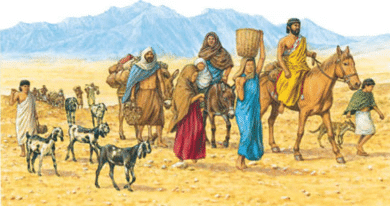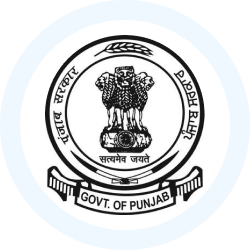Emergence of Various Kingdoms and Empires in Punjab | Punjab State (PPSC) PSC: Preparation - PPSC PCS (Punjab) PDF Download
Introduction
The ancient history of Punjab documents the rise of various kingdoms and empires, including the Aryans, Persians, Greeks, Indo-Greeks, Mauryans, Sungas, Shakas, Parthians, Kushans, Guptas, Huns, Vardhanas, and Palas.
The Emergence of Aryans in Punjab (Vedic Period, 1500 BC-600 BC)

The Aryans arrived in Punjab after the decline of the great Indus cities, migrating from the North-West. They established village settlements, as they did not live in castles, mansions, or cities. The Rigveda, the most famous text of the Aryans, is believed to have been composed by seers along the banks of Punjab's rivers. There are also beliefs connecting the region to the mother of Lord Rama.
Agricultural Practices
- During the Vedic period, agriculture expanded to the flood plains and strips of land along rivers and canals.
- Barley was the primary crop during this time.
Technological and Craft Developments
- The spoked wheel emerged as a significant advancement in transportation.
- Various crafts, such as pottery, carpentry, weaving, and trading, were closely linked to agricultural activities.
Settlement Patterns
- The region along the Himalayas, previously covered in dense vegetation, saw the establishment of rural settlements during this period.
Tribal Republics and Religious Shift
- Punjab was divided into several tribal republics, including the Trigartas, Kulutas, Kunindas, Yakdeyas, and Malanas.
- Coins discovered in excavations support the existence and dominance of these tribal republics.
- Over time, the Vedic religion became more complex with intricate rituals, leading to a decline in Aryan supremacy as people turned towards Buddhism and Jainism.
The Persian and Greek Invasion
Persian Empire
- Punjab, located on the fringes of the Persian Empire, became one of its wealthiest provinces.
- In 516 BCE, Persian king Gustasp completed the annexation of Punjab.
Greek Invasion
- In 321 BC, Alexander the Great, son of Philip of Macedon and Olympias, conquered Punjab.
- Many local chieftains submitted to Alexander’s authority without resistance.
Punjab has a rich history of being ruled by various foreign powers, which has led to a blend of different cultures. The region was known for its bravery, with kings like Porus (who fought Alexander) and the Mauryas (who expanded their empire here) making their mark.
Porus and Alexander the Great
- Porus was a king in Punjab, ruling the area between the Hydaspes (now Jhelum) and Acesines (now Chenab) rivers.
- He fought against Alexander the Great in the famous Battle of Hydaspes.
- Impressed by Porus’s determination, Alexander not only returned his kingdom but also granted him additional land extending to the Hyphasis (now Beas) river.
- Alexander's invasion brought Punjab closer to Western countries, leading to the settlement of Greeks and Persians in the region as officers, soldiers, traders, and artisans.
- This period marked a significant fusion of cultures due to foreign invasions.
Indo-Greek Kingdom
- The Indo-Greek kingdom existed from the 2nd century BCE to the early 1st century BCE in Northern and North-Western India.
- There were around 30 Indo-Greek kings competing for different territories, many known only through their coins.
- The most famous king was Menander, who ruled Punjab from 160 BCE to 140 BCE. His discussions with the Buddhist philosopher Nagasena are found in the ‘Milindapanha’.
- Menander expanded his kingdom, with coins found from Kabul to Mathura, and tried to conquer the Ganges valley but was defeated by the Sungas. He established his kingdom in Taxila and later moved the capital to Sakala (modern Sialkot).
Mauryan Empire
- Chandragupta Maurya is believed to have first acquired Punjab before challenging the Nanda Empire with Chanakya’s help.
- He expanded the Mauryan Empire into Punjab and defeated Alexander’s successor, Seleucus Nicator, with Chanakya’s assistance, securing a large area of Afghanistan.
- The Sanskrit play Mudrarakshasa and the Jaina work Parisishtaparvan describe Chandragupta’s alliance with the Himalayan king Parvatka, identified with Porus.
- Under the Mauryas, modern Punjab was part of the province of Gandhara, with Taxila as its capital.
- After Chandragupta’s death, his son Bindusara became king, and during his reign, Greek ambassador Deimachus visited the court.
- Bindusara’s son, Asoka, was made the provincial Governor of Gandhara and after the Kalinga war in 261 BC, he embraced Buddhism and focused on the welfare of his subjects.
- Asoka installed inscriptions in Kharoshthi script in Western India and Brahmi in Eastern India. He died in 232 BC, and after his death, the Mauryan Empire weakened and eventually disintegrated.
Early Rule in Punjab
After the decline of the Maurya Empire, Pushyamitra Sunga took control of Punjab and established the Sunga dynasty in Central and Eastern India. During his rule, a significant part of Punjab was included in his empire.
In North-Western India, the Mauryas were succeeded by various groups including the Greeks, Shakas, Parthians, and Kushanas. The Greeks were eventually replaced by the Shakas, who made Punjab one of their five seats of power in India, with Taxila as their capital.
Shakas and Parthians
- Later, the Shakas were succeeded by the Parthians, who originally came from Iran. The most notable Parthian king was Gondophernes, known for his coins and coin-moulds found in places like Sunet in Ludhiana district and Rohira in Sangrur district.
Kushan Empire
The Kushan Empire was founded by King Heraios and expanded significantly by his successor, Kujula Kadphises. The empire reached its zenith under Kanishka I, who established Purushapura (modern-day Peshawar) as the winter capital and Kapisa (now Bagram in Afghanistan) as the summer capital. The Kushans played a crucial role in connecting the Indian Ocean trade with the Silk Road commerce through the Indus Valley. They were also the first in India to issue gold coins on a large scale.
The Kushan rulers maintained active trade relations with the Roman Empire, as evidenced by Roman coins found in Punjab, Kabul, and surrounding areas. King Kanishka is also credited with promoting Mahayana Buddhism by organizing a significant Buddhist council in Taxila around 100 CE. He also established the Saka era in 78 CE. Chinese pilgrims Fa-Xian and Hiuen Tsang later documented the flourishing Buddhist seminary in Taxila and the prominence of Buddhism in Punjab during this era.
Gupta Empire
The Gupta Empire, existing from approximately 320 to 600 CE, encompassed much of the Indian subcontinent, including Punjab. Founded by Srigupta, the dynasty saw its most significant ruler in Chandragupta I. This period is renowned for its cultural achievements in architecture, sculpture, and painting, alongside advancements in science and political administration. Samudragupta, Chandragupta I's son, expanded the empire into Nepal and Punjab, receiving homage from various rulers and tribes. His son Chandragupta II further extended the empire, and the discovery of red polished pottery and other artifacts in Punjab supports its inclusion in the Gupta Empire.
Post-Gupta Period
Huns in Northern India
- After the Gupta ruler Skandagupta died, Iranian-speaking Hun tribes invaded Northern India.
- The Huns attacked Gandhara and Punjab from the Kabul valley after defeating the Kidarite principalities.
- Toramana, an Alchon ruler, established control over Gandhara and Western Punjab. He was succeeded by his son Mihirakula around 520 CE, with his capital at Sakala (modern-day Sialkot in Pakistan).
- The Huns faced defeat from Yasodharman of Malwa in 528 CE, and by 542 CE, Mihirakula was driven from Northern India, seeking refuge in Kashmir.
Vardhana Age
- The Vardhana dynasty was established by Pushyabhuti in the early 6th century CE at Thaneswar (present-day Kurukshetra, Haryana). The dynasty expanded its influence over a large part of Punjab.
- The most notable ruler of this period was Harsha Vardhana, who initiated the Harsha era. His reign was marked by significant developments, including the visit of the Chinese traveler Hiuen Tsang to India. Hiuen Tsang praised the ancient town of Sirhind in Punjab during his travels.
Pala Empire
- The Pala Empire was a dominant power in India during the classical period, existing from 750 to 1174 CE. The Palas were followers of the Hinayana and Tantric schools of Buddhism.
- The empire reached its zenith under rulers like Dharmapala and Devapala. Dharmapala expanded the empire into the northern parts of the Indian subcontinent, stretching from Assam and Utkala in the east, Punjab in the northwest, and the Deccan in the south.
|
23 videos|50 docs|47 tests
|
















